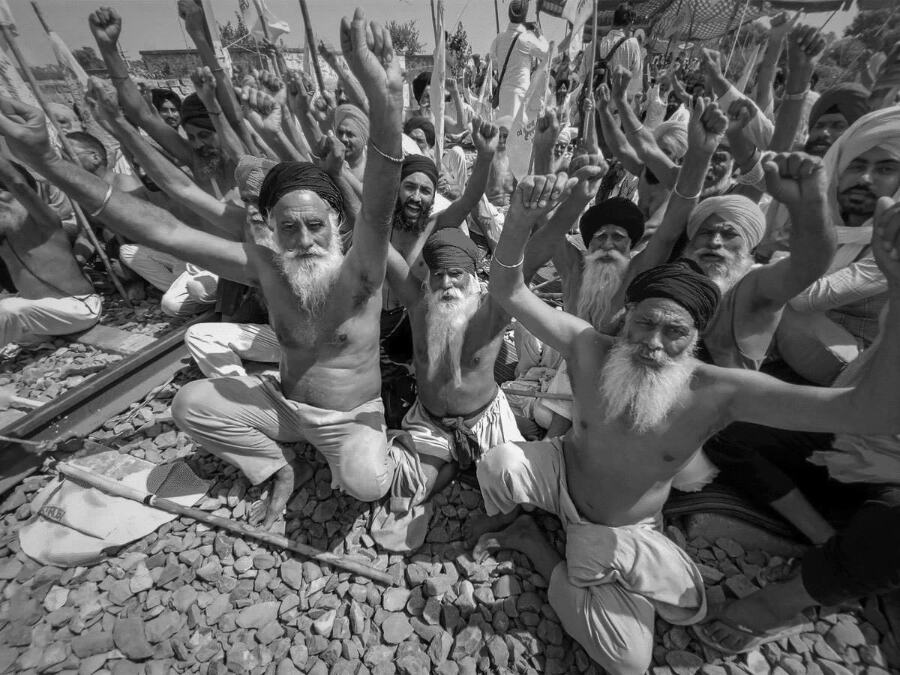Still standing strong
The Lakhimpur Kheri incident has drawn fresh attention to the longstanding farmer agitation necessitating its immediate resolution

We are nearing a year of the farmer agitation and yet there is no resolution in sight. The unfortunate Lakhimpur Kheri violence followed a brutal incident involving a BJP minister's convoy bulldozing farmers, and mercilessly trampling and dragging bodies. The ensuing violence led to lynching and the entire incident caused the loss of eight lives, including four farmers. The Lakhimpur Kheri incident has drawn fresh attention of our myopic news channels to the 10-month long nationwide farmer agitation. However, the truth is that these farmers never did abandon their posts. They stood resolute in their convictions, at those very same protest sites, adding newer locales in the last few months, as they carried on with their protests. Even as the country was in the throes of Covid-19 and then the vaccination drive, the farmer agitation continued simultaneously.
Though the government has not tried to remove the Supreme Court stay on the new farm laws, there has been little attempt to truly resolve the stalemate. It's well-proven by now that these workers of the soil, who constitute two-thirds of the Indian population, are not going to give up. Neither are they convinced about the purported gains that the government promises will follow the entry of the private sector. The last few months have, in fact, further strengthened their conviction, with the agitation providing a platform for all their pent-up grievances.
Farmer protests in India have historically been powerful and emotive. A news report available in the public domain interestingly chronicles the colonial history of Indian farmer protests — from the first one ('Deccan Rights' movement) in 1874 to one in Punjab in 1906, to protests that were reported around the same time in 1914 in present-day Jharkhand, Maharashtra, Telangana, and Bengal. The famous agitation in 1917 when farmers in Champaran erupted against being forcibly made to grow Indigo; Mahatma Gandhi joined these protests. There were protests by the farming community in Uttar Pradesh and Malabar region of Kerala between 1920-22 and of course, the Punjab protests of 1984 in modern India. And more often than not, in all these protests, the farmer has had the last word.
It's in the best interest of both farmers and the current dispensation to find a way forward. Like in any relationship, the spirit of compromise could pave the path ahead. But it's unrealistic to expect compromise from the lakhs of farmers who already feel denigrated by negative propaganda. The government should show munificence and withdraw the three farm laws, with a decision of revisiting them after implementing effective awareness programs. There is much progress being made in the agritech sector with game-changing solutions being provided by young startups. Let the agricultural community get better acquainted with newer and better methods of farming. Rebuild the trust between the farmers and the government before discussions can resume on the three farm laws. If there must be an agricultural revolution, it would be astute to involve stakeholders from all sides of the farming community. After all, these laws impact the farmers directly and irreversibly.
The agitations in north India are not happening in a silo. It won't be a fallacy to assume that the issues, action, and lack of resolution being seen in the north is being carefully watched by the farming community elsewhere in the country. For urban masses, it is easy to forget that these protests even exist. But hard chance that the farmer brethren is looking the other way. It's said that the Durga Puja pandals of Kolkata portray the most burning issues of the country — the farmer agitation has reached a Dum Dum Park puja pandal. It shows the current pulse of the nation; our leaders must at least do the political math.
The writer is an author and media entrepreneur. Views expressed are personal



